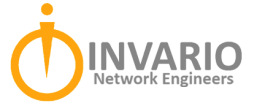It’s a special kind of relentless attack all business owners and managers face: the persistent, crazy, chaotic assault on your time and attention. No one is immune, and every business deals with it.
Some leaders handle the constant pressure on their attention brilliantly, keeping the team organized and highly productive. But most people struggle with this. They feel crushed and overwhelmed by all the things they have to keep track of and complete. This goes double if your business is in growth mode and not “standing still” or casually strolling through its existence.
Add to this a remote workforce, and it can be intensely difficult to wrap your head around all the projects, to-dos, deadlines and client deliverables you and your leadership team must manage.
We, as your IT company, can’t tell you what projects are most important. However, we can help you and your team stay far more organized. With the right tools, you can confirm that the people on your team are properly aligned, prioritizing the right work, and focused on the right priorities. We can also help you organize communication. This lessens the chance of a dropped ball or a communication failure, which is by far the #1 reason why problems happen in business.
One of the tools we recommend to clients wanting to get more operational control and clearer communication is Microsoft Teams. There are a lot of reasons why this is a “super tool” for productivity and organizational alignment. Plus, as a bonus, it typically ends up saving our clients quite a bit of money on technology, because it replaces other applications, like Slack, Zoom and dozens of popular project management software. This all this functionality into one lower-cost, more secure and more tightly integrated system.
Our Favorite Teams Features
Here are just a few of the cool features you’ll love in Teams. Keep in mind that this list is far from complete. Microsoft Teams has over 1,900 applications. Choose the ones you want to integrate into a Teams Channel to organize information, workflow, tasks, deadlines and documents.
Posts: The “post” feature works a lot like Slack. It lets you post questions, reminders and status updates to everyone on that Team regarding that project. This keeps ALL communication for a project in one place. Plus, it creates a history and alerts everyone on the team to what’s going on. This feature saves a lot of money for companies using Slack since it’s native and included in Microsoft Teams.
Tasks by Planner and To-Do: This section of Teams is one of our favorites. It allows you to create “complex” to-do lists. Mails you flag in Outlook will Once you create a task, you can set priority and due date, and assign it to one or more people. Teams also allows you to see a progress status, add documents and files, and create a checklist of all the remaining to-dos. Better yet, team members who are responsible for the project can provide status updates. They can also check off items that they’ve completed, so you know where you are with any particular project.
Video Conferencing: Teams has some features that make it even better than Zoom for team collaboration and projects. The biggest advantage over Zoom is that you can hold a video conference, and the recording of the meeting – along with all of the notes, files and links – will remain in that Team. This provides easy reference later on. It can be extremely helpful for people who couldn’t attend a meeting. Teams makes it easy for them to find and watch the recording. It also retains a record of critical conversations. Plus, you eliminate expensive Zoom licenses for all employees because Teams is part of Microsoft 365.
If you want to see a demo of Teams or do a cost analysis to see how implementing this can save your organization money on Slack, Zoom and other project management software by combining it into one application, click here to schedule a brief call.

